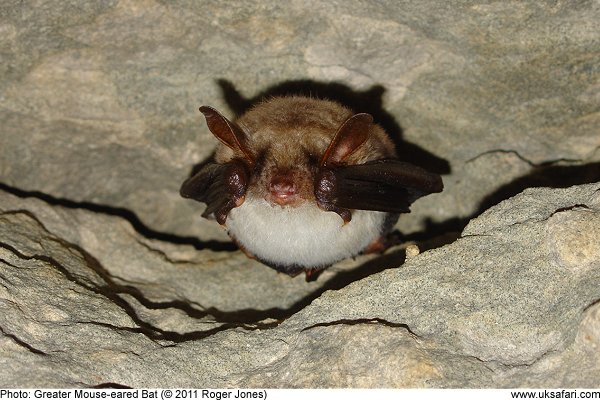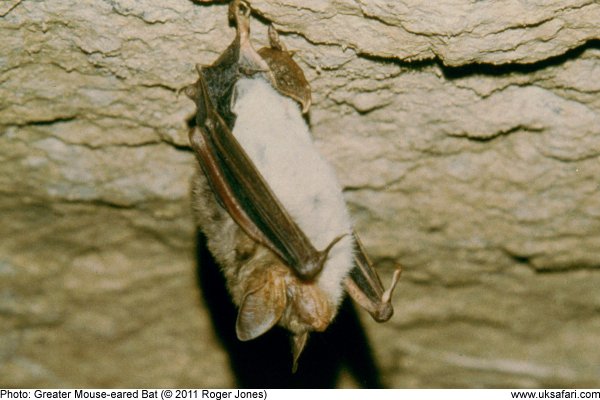 Quick Facts
Quick Facts
Scientific name: Myotis myotis
Size: Wingspan up to 45cm, head and body length up to 9cm
Distribution: A solitary male is known from a hibernation site in Sussex, however the species is classified as extinct in the UK
Months seen: n/a
Habitat: Winter roosts in caves and tunnels. Summer in trees and buildings
Food: Moths, flies, midges and beetles
Echolocation Frequency: Between 22 and 86 kHz (mostly 37 kHz)
Special features: Greater Mouse-Eared Bats are large bats with pale brown coloured fur on the upper half of their body, and greyish-white fur underneath. They have very distinctive large ears and a narrow pointed tragus.
The greater mouse-eared bat was only discovered in the UK in 1958, and by 1990 it was officially declared extinct here. Since then, two Greater Mouse-eared Bats have shown up. The first was a female, found in Bognor, in 2001, which died a few days after discovery. The other was a male, found in December 2002, in a tunnel near Chichester. As a result of these finds it's hoped there may still be a small group breeding somewhere in Sussex.
 Related Pages
Related Pages
- UK Safari Bats Section
- UK Safari Mammals section
- UK Safari Extinct Wildlife section
- Identify other wildlife
- Free Newsletter

 Popular Pages
Popular Pages
Amphibians, Bats, Badgers, Beetles, Birds, Birds of Prey, Bumble Bees, Butterflies, Caterpillars, Creepy-Crawlies, Deadly Spiders, Dolphins, Dragonflies, E-Postcards, False Widow Spiders, Free Newsletter, Frogs, Fungi, Garden Spiders, Glow-Worms, Grey Squirrels, Hedgehogs, House Spiders, Ladybirds, Mammals, Marine Mammals, Moths, Owls, Reptiles, Spiders, Toads, Trees, Wildlife Hospitals
© Copyright 2017 G. Bradley - UK Safari | About Us | Links | Contributors


 Greater Mouse-eared Bats
Greater Mouse-eared Bats



